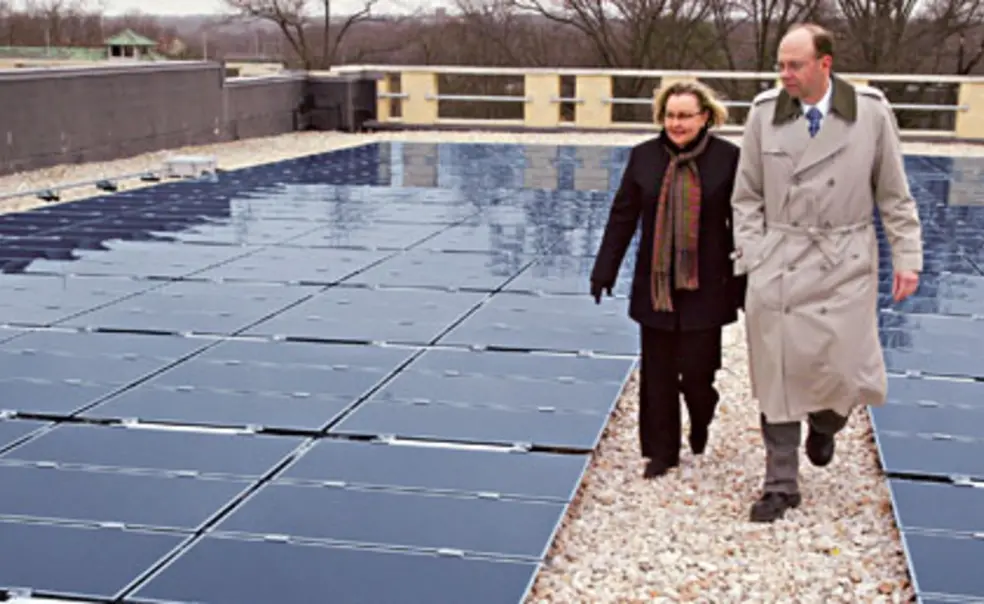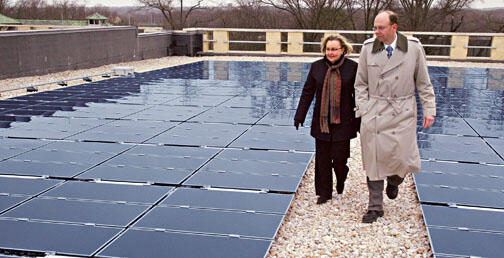As Princeton invests in energy savings, usage dips
In 2009–10, Princeton will spend $89.9 million on energy and facilities operating expenses, about 7 percent of the total operating budget. Decreasing those kinds of operating costs could help the University avoid or limit staff reductions, executive vice president Mark Burstein said in an early March meeting focused on Princeton’s finances.
So while most University offices are tightening their belts, the facilities department continues to look for new investments in energy conservation.
“Essentially, we’ve always had a blank checkbook when it came to investments that would reduce energy consumption, and that has not changed,” said Michael McKay, the University’s vice president for facilities. “In fact, if anything we’re being encouraged to look for more and more opportunities, because despite the fact that there’s an up-front capital cost, there is a huge long-term benefit.”
The checkbook has limits. To warrant an immediate investment, a project’s energy savings typically must pay back the University’s investment in three or four years, McKay said.
Under Princeton’s sustainability plan, adopted in February 2008, the University includes a self-imposed carbon tax when calculating the price of energy, a factor that tilts the scales in favor of energy-saving plans. But some intriguing energy-efficient options — LED lighting, for example — remain too expensive to justify large-scale installation.
The changes Princeton has made are beginning to show in overall campus energy use. From 1988 to 2005, annual electrical consumption climbed steadily as the campus grew, starting at about 70,000 megawatt-hours and peaking at just under 120,000 megawatt-hours. But in the last three years, even as the campus has expanded, the curve has flattened and dipped slightly, showing annual decreases in electrical use of less than 1 percent. McKay said that while the savings are small, the change in trajectory is significant.
Steam and chilled water, which drive the University’s heating and air-conditioning, have followed the same pattern. Princeton also has worked to conserve water, adding dual-flush toilet handles in many residence halls and academic buildings. Low-flow showerheads in dormitories have trimmed both water use and energy costs associated with heating water.
More energy-efficient projects are in the works. In February, the University completed its largest solar energy installation at the Research Collections and Preservation Consortium (ReCAP), a facility on the Forrestal campus that stores books, journals, and other materials from the Princeton, Columbia, and New York Public libraries. More than 5,000 photovoltaic panels cover some 53,000 square feet of the building’s roof, giving ReCAP the capacity to produce 370 kilowatts of power. PPL Renewable Energy funded the installation and earns renewable energy credits for the electricity that the system generates.
On the main campus, the new chemistry building will include a more modest solar installation in the panels that shield the building’s atrium. The renovation of Campus Club will employ a geothermal heating and cooling system, which uses deep wells and a closed system of circulating fluids to take advantage of underground temperatures.
Two of the new dormitories at Butler College will be covered with green roofs, with vegetation that aims to cut down on the heating load and improve storm-water runoff. When the dorms open in the fall, a group of students will work with senior lecturer Eileen Zerba of the Princeton Environ-mental Institute to measure and evaluate the benefits of the roofs.












No responses yet